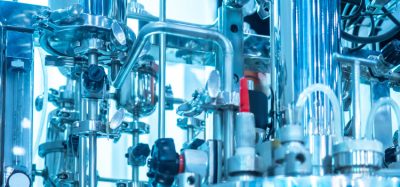‘Pharmaceutical Industry / University’ R&D collaboration on Process Analytical Technologies
Posted: 9 May 2010 |
Process analytical technologies (PAT) are mature and well advanced in the classical chemical industry. Many successful industry/university R&D collaborations are aimed at the development of analytical methods and their application in process control. However, PAT in the pharmaceutical industry is a rather new field. It is precisely this latter reality that makes many scientists, scientists-engineers and other practitioners sceptical about the possibility and the usefulness of establishing similar R&D collaborations between industry and academia.


Process analytical technologies (PAT) are mature and well advanced in the classical chemical industry. Many successful industry/university R&D collaborations are aimed at the development of analytical methods and their application in process control. However, PAT in the pharmaceutical industry is a rather new field. It is precisely this latter reality that makes many scientists, scientists-engineers and other practitioners sceptical about the possibility and the usefulness of establishing similar R&D collaborations between industry and academia.
The pharmaceutical industry requires new tools for ‘in-line’, ‘on-line’ or even ‘at-line’ analysis to provide quality control at least equal to or better than the ones currently used ‘off- line’ while substantially reducing cycle time and overall quality control costs. These efforts require an intense R&D component, and the question is whether they contain elements compatible with academic research or not.
In this article, the author analyses the issue and shows the rationale, objectives and methodologies established recently as an industrial research Chair on PAT in Pharmaceutical Engineering at Université de Sherbrooke (UdeS) in collaboration with Wyeth Pharmaceuticals, now part of Pfizer.
An industrial Chair is an academic body created by a University and one or more industrial partners; the purpose being to facilitate the interdisciplinary interaction between the convening parties and reach significant scientific and technical advances which profit the industry and the society more generally. The establishment of a Chair is possible when the collaborating parties recognise the mutual benefit of establishing research collaboration in the field of the Chair. In the herein reported case, the Chair focuses on ‘Process Analytical Technologies (PAT) for Pharmaceutical Engineering’ and it is funded by Wyeth and the UdeS. This Chair’s main target is the field of dry granulation, but it also includes a biotechnological component. This Chair partnership program in PAT includes research, development and implementation components, since the effort is an integrated one between academic and industrial partners. In the abbreviation ‘R&D’: (a) the letter ‘R’ concerns fundamental research on the behaviour of moving powders (mixture and flow) as a function of their physico-chemical properties and cohesion-adhesion forces; (b) the letter ‘D’ represents the use of fundamental knowledge acquired in ‘R’ as well as existing or underdevelopment, ‘real-time’ analytical techniques for the understanding and efficient simulation of complex processes such as the handling of particle systems. The knowledge thus gained or derived is transferred to industry by a framework agreement of collaboration between academic and industrial partners. Such collaboration is possible and effective when it is ‘win-win’ for the two partners. This means that it should aim for the profitability sought by the industrial partner (quality-by-design, QbD) and the enrichment of society with new knowledge and highlyqualified people, which are the main mandates of academia.
Such an ambitious project would be impossible without federate complementary resources. It was achieved by ensuring the collaboration of internationally-renowned colleagues and the contributions of companies developing and marketing analytical equipment.
PAT in the pharmaceutical industry
The Food and Drug Administration (FDA) officially adopted the PAT concept in 2001. The FDA defines PAT as a system to measure, understand, monitor and control a process through real-time analysis of its critical parameters, the objective being to ensure quality of the final product and to improve production output and quality while minimising environmental, health and safety risks. The main challenges in implementing PAT within an adopted QbD strategy are to:
- Facilitate and lower the laboratory analysis workload by replacing ‘off-line’ time and resource requirements by ‘in-line’, ‘on-line’ or even ‘at-line’ quality assessment and control during manufacturing
- Improve the robustness of processes and consequently speed up the release of production in the market
- Reduce the statistical probability of failure of manufacturing off-specification products
In the expression ‘Process Analytical Technologies’, the term ‘analytical’ is taken in the broad sense. It includes all chemical, physical and microbiological techniques as well as mathematics and risk analyses. The ideal analytical tools are those that allow for nondestructive and non-invasive real-time measurement. The FDA suggests four types of PAT tools (PAT toolbox) to measure, understand, track, and control a process. These tools are:
- Analysers quantifying critical process (physical and mainly chemical) parameters, i.e. spectrometers analysing mixture composition over time
- Statistics used in the design of experiments, i.e. factorial plans and all other techniques for evaluating as well as understanding the influence of critical parameters and their interactions with the process
- Process control, i.e. multivariate analysis and control strategies
- Knowledge management and continuous improvement, i.e. mathematical models and protocols
A PAT application is defined as a combination of two or more of these four tools to ensure proper monitoring and process control.
Strategic objectives of the industrial research Chair
In the context described above, UdeS and Wyeth have combined their efforts by creating a Research Chair on PAT in Pharmaceutical Engineering. The Chair defined the following strategic objectives:
- Develop knowledge on: 1) physicochemical phenomena governing the behaviour of processes involved in industrial pharmaceutical production (where PAT may be applied); 2) the criteria of ‘pheno – menological or stochastic model-based technology transfer’ (i.e. scale-up and implementation of new technologies on which PAT may be applied)
- Improve the control of processes and products based on PAT
- Train highly qualified personnel in this increasingly interesting PAT and QbD area, both in academia and industry
- Consolidate the research component in the field of processes in the Department of Chemical and Biotechnological Engineering of UdeS and develop a critical mass of research in PAT in Pharmaceutical Engineering
Although the Chair seeks the development of vastly useful PAT tools, there are urgent needs in divided solids (particulate systems) behaviour analysis. Therefore, this domain has been identified and chosen as the Chair’s first target. The specific objectives of the Chair can be summarised as follows:
- Set preferably ‘in-line’ analysis methods to measure critical parameters of the studied processes with accuracy and robustness
- Use these analyses to ‘understand’ the behaviour of processes
- Develop phenomenological models to simulate the operation of processes and define efficient scaling-up algorithms
- Undertake simulation to control the pro – cesses and thus improve products quality
- Adopt industrial-scale operation protocols with PAT
The proposed research program is original because worldwide, the development of PAT methods is rather empirical and the reported results are factual. A gaze on the content of presentations during one of the most important world conferences in this area, the International Forum on Process Analysis and Control (IFPAC), is sufficient to understand that, in the current work, industrial research groups are constantly seeking right and/or new ways of improving the ‘cause-and-effect’ links between basic scientific principles and PAT applicability. The research is mainly performed by teams composed of analytical equipment suppliers and R&D staff of the interested pharmaceutical companies.
In our opinion, their relative isolation from academia penalises both (suppliers and industrial researchers) sides and significantly delays PAT development. Furthermore, such an isolated R&D strategy does not allow industry to benefit globally from the actual state of knowledge. That is why the Chair’s work is being carried out by an interdisciplinary team and includes three phases:
- Phase 1 (R): Basic (fundamental) research
- Phase 2 (D): PAT solutions development
- Phase 3 (DI): Demonstration and PAT solutions implementation
The effort-integrated Chair
The success of the Chair’s endeavours is based on the harmonious integration of fundamental projects with the development of comprehensive and functional PAT solutions in industry. Such integration is explained below:
- The key component of this effort is the PAT interdisciplinary team comprising UdeS, Wyeth, professional research collaborators from various institutions and students. The team profits from the knowledge and experience acquired in similar or related projects
- The team details students’ projects based on the needs defined by a development list of the projects
- The evolution of projects is assessed con – tinuously by exploiting (a) new knowledge brought forward by the fundamental research component; (b) practical experience gained from tests in laboratories and factories, enhancing expertise on the subject; and (c) contributions from the Chair’s external collaborators
- During execution of the projects’ activity steps, students take advantage of the industrial partner’s infrastructure and continuously- developing expertise Students have the opportunity to leverage their knowledge and validate their assumptions and comments in laboratories, production units and other facilities of Wyeth in accordance with pre-approved procedures. Although the implementation of PAT solutions is shown as belonging to parallel work plans, particular effort is being made to ensure that each completed project benefits quickly and consistently from knowledge gained through the implementation of other projects. Thus:
- Each development plan includes one or more of industrial development and implementation activities and seeks the achievement of a strategic target
- Although these plans are essential, some of the PAT tools for each plan could as well be part of another plan, depending on the usefulness of specific PAT tools in other applications
Acknowledgements
Apart from UdeS and Wyeth, this effort is possi ble thanks to the financial contribution of the Natural Sciences and Engineering Research Council of Canada (NSERC) through a grant under the Collaborative Research and Development program. NSERC is instrumental in creating a critical mass of researchers and highly qualified professionals in the fields of engineering and sciences, which are priority axes of development for Canada. Finally, many thanks are due to the entire PAT team of Wyeth and, in particular, Mr. Jean-Sebastian Simard, responsible for the industrial side of the Chair.
About the author
Dr. Nicolas Abatzoglou is full professor and Chairman of the Department of Chemical & Biotechnological Engineering of the Université de Sherbrooke. He is a specialist in Process Engineering involving particulate systems in reactive and non-reactive environments. He is the holder of the UdeS/Wyeth Industrial Research Chair in Process Analytical Technologies (PAT) in Pharmaceutical Engineering. He is co-founder of the company Enerkem Technologies Inc., a spin-off of the Université de Sherbrooke in the field of energy from renewable resources. He has a career of many years at both the academic and industrial levels. His professional experience as an engineer spreads over the last 20 years. He represented Canada at the International Energy Agency (Gasification Task) from 1997-2001 and was the secretary of the Board of Directors and the Executive Committee of the AQME (Association québécoise pour la maîtrise de l’énergie) from 1996-2000. His production as a researcher includes a hundred of publications in scientific reviews, international conferences, plenary and invited lectures, patents and a book chapter.








